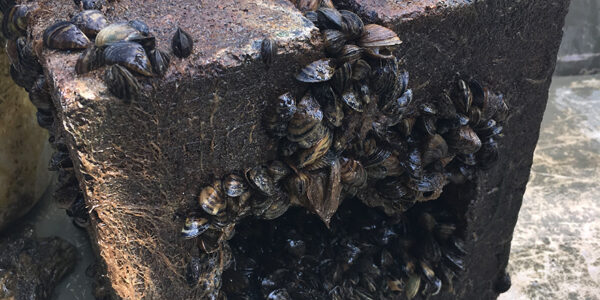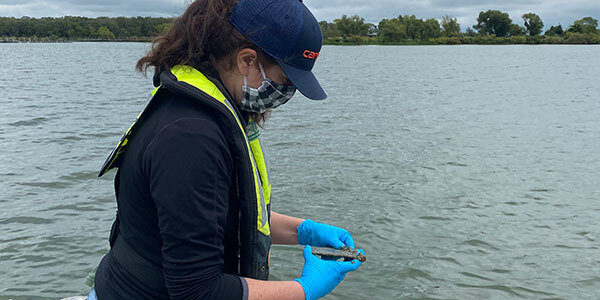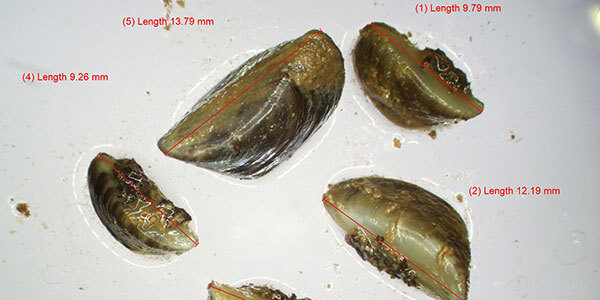Late-stage dreissenid larvae (veligers) settle out of the water column and attach to substrates by using proteinaceous byssal threads. Often, dreissenid mussels will settle on hard substrates (e.g. pipes, screens, rocks, and other mussels) but can settle on soft substrates (e.g. plants, rope, and Styrofoam). After settlement, mussels metamorphose into juveniles.
As a complement to visual inspections, ZMMP personnel prepare artificial substrates that mimic desirable natural substrate characteristics. These artificial substrates are deployed at most study sites, and are used as passive samplers to monitor the settlement and growth of dreissenid mussel juveniles and adults.

Artificial substrates for reservoirs are constructed of a series of stacked 4- by 4-inch hardboard tiles separated with 0.25-inch spacers.

Cinderblocks are used for adult zebra mussel passive sampling to withstand the higher water velocities on rivers and creeks.

Samplers are visually inspected in the field. Currently, all adult zebra mussels detected in the field are quantified and measured at the USGS North Texas Program - Fort Worth laboratory.

If mussels are detected, they are analyzed in the laboratory by using a stereomicroscope. Mussel density (mussels per square meter) is determined and the shell lengths of a subset of individuals are recorded.